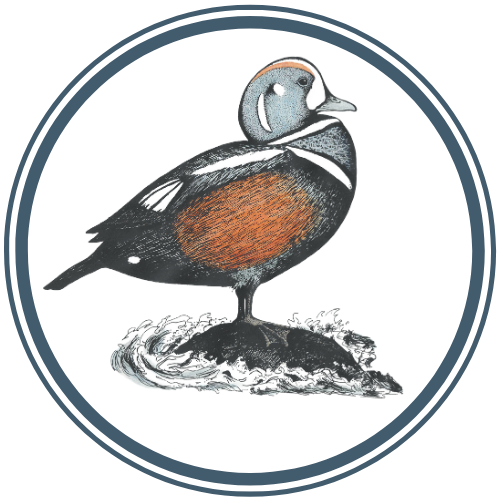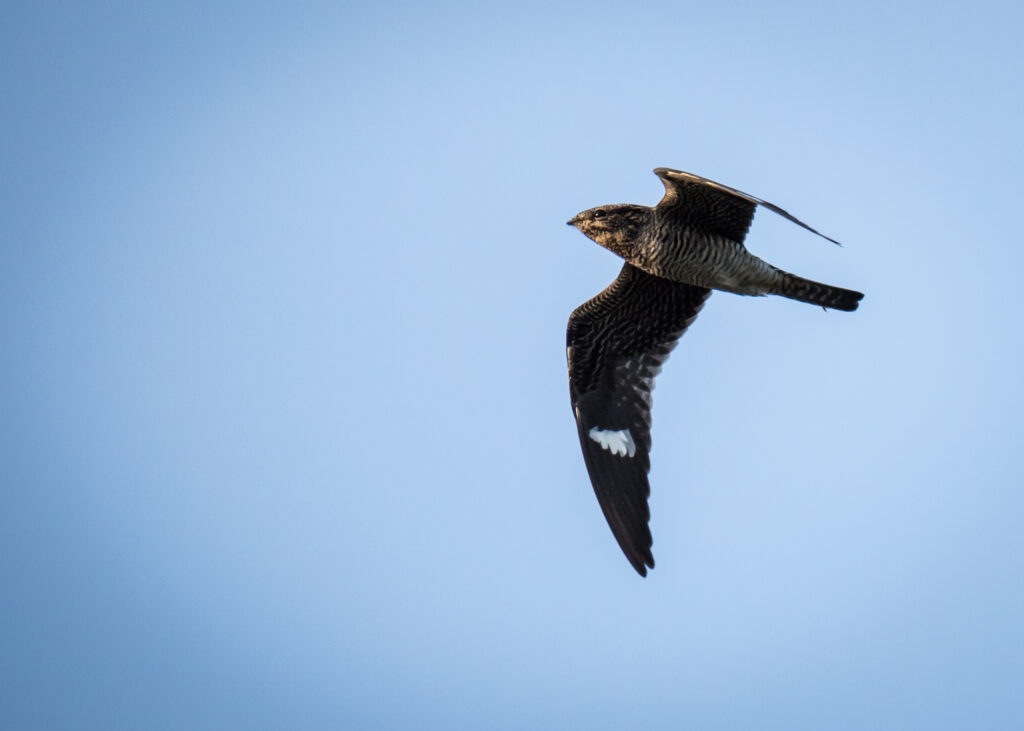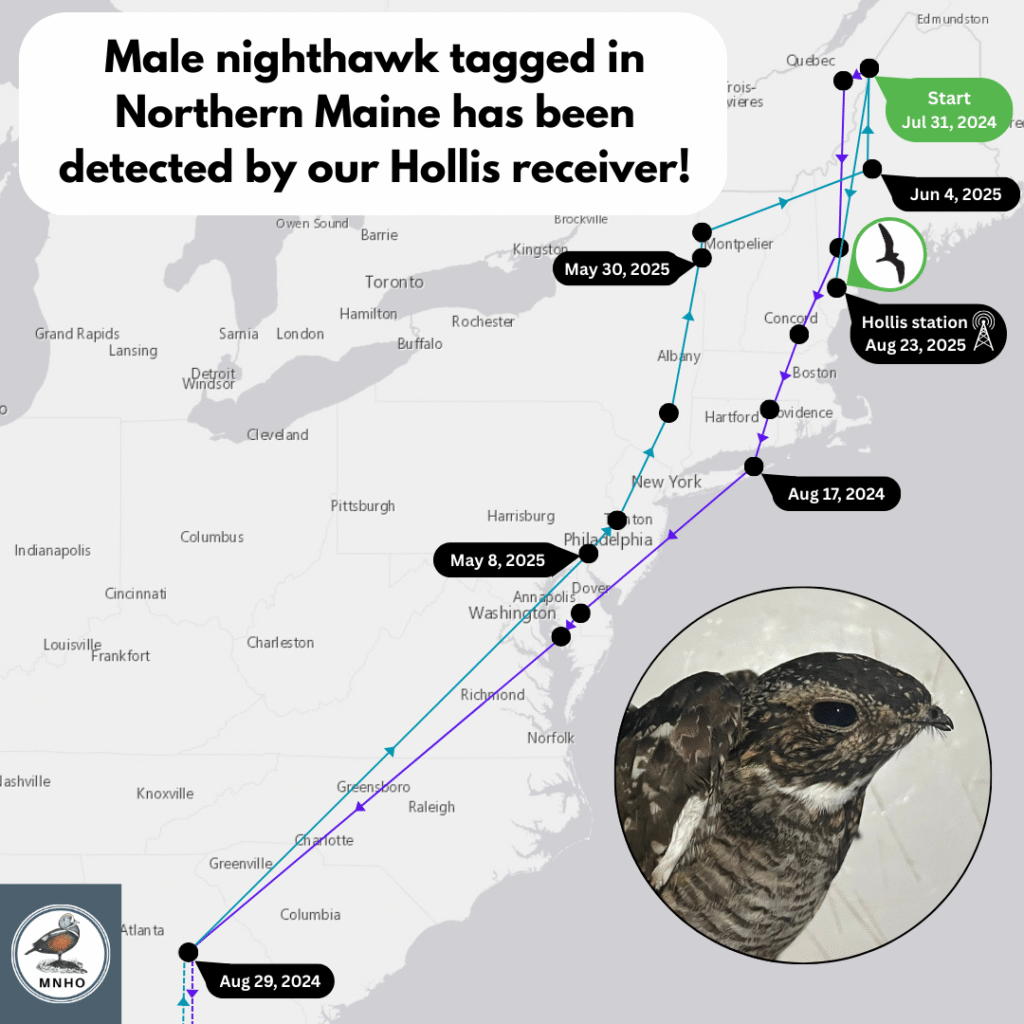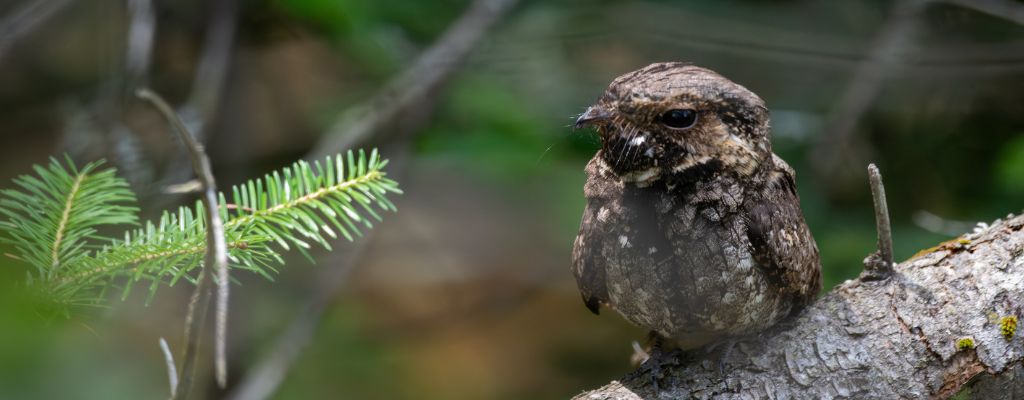
Whip-poor-will Migration Map
Use the bar at the bottom of the map to navigate through time. Click the bird names to filter the map. Pause the playback and click the bird icons to read more about each detection.
Meet the 2025 Whip-poor-wills
These are some of the Eastern Whip-poor-wills that were tagged in 2025.
Whip-poor-will biology is strongly tied to the moon. As such, these birds have been named after various moons in our solar system.

Prospero
Male
Tagged:
Kennebunk Plains, 4 June 2025
- Detected during tracking efforts with hand-held antennas until 18 September 2025.
- Seemingly unpaired in 2025.
- Fall migration route appears bounded by Appalachian Mountains as detections were consistently south/southeast of the range during movement.
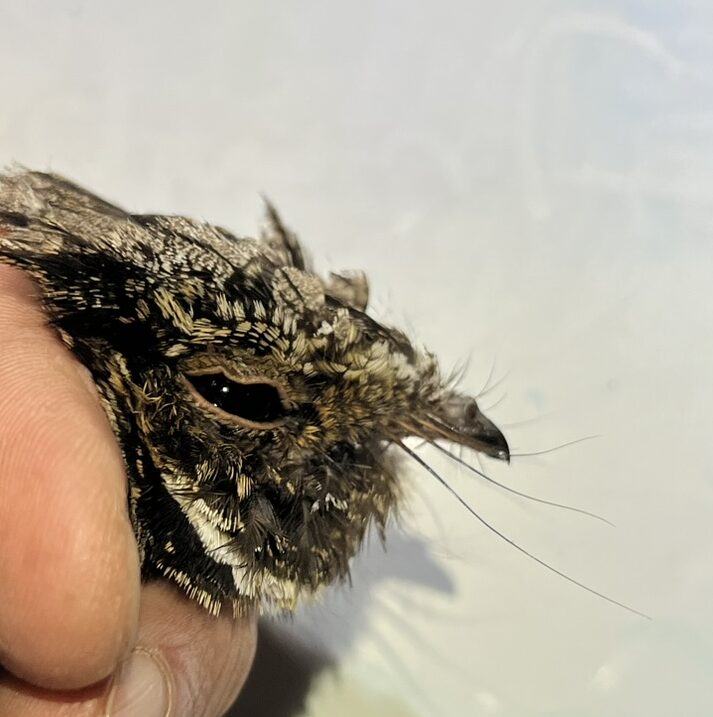
Caliban
Male
Tagged:
Norridgewock, 3 July 2024
- Recaptured/tag replaced on 18 June 2025 in Norridgewock.
- Tracked to nest site with hand-held antenna on 21 June 2025.
- Detected during post-breeding tracking efforts with hand-held antennas until 18 September 2025.
- Started fall migration on 30 September 2025.
- Fall migration route appears bounded by the Appalachians as detections were consistently south/southeast of the range during movement.
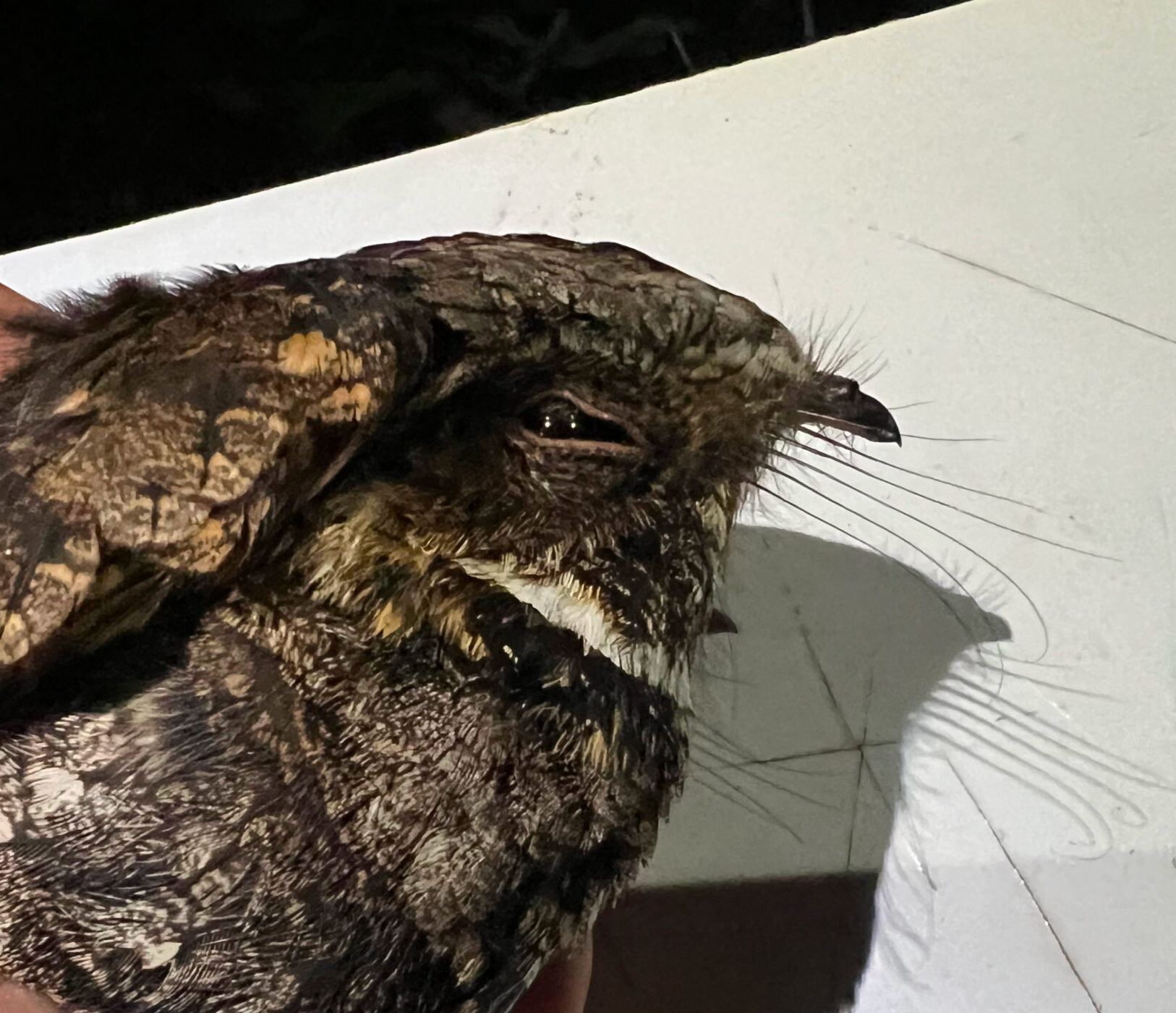
Narvi
Male
Tagged:
Hollis, 12 June 2025
- Regularly detected by Killick Pond receiver station during the breeding season.
- Seemingly unpaired and never tracked to nest site during 2025 field season.
- Started fall migration on
20 September 2025. - Fall migration route appears bounded by the Appalachians as detections were consistently south/southeast of the range during movement.
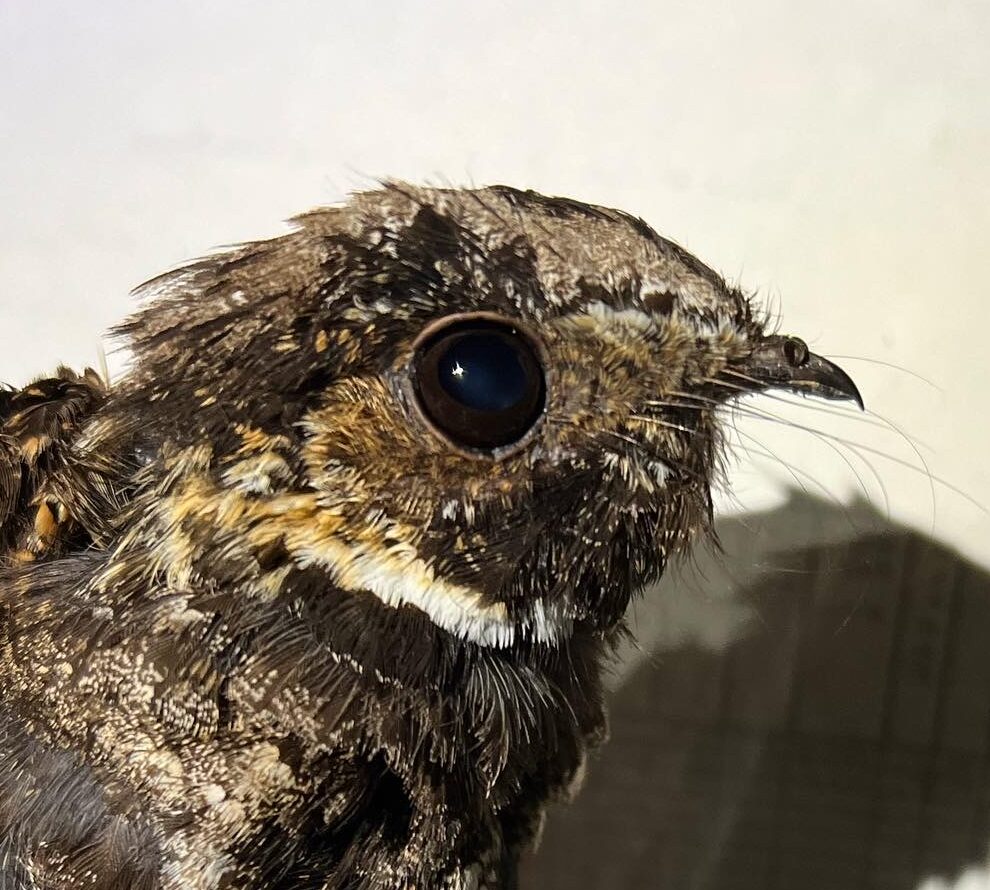
Trinculo
Male
Tagged:
Norridgewock, 19 June 2025
- Tracked to a nesting location with hand-held antenna on 29 June 2025 (egg stage).
- Despite relatively late timing, nest successfully fledged young (brood possibly split between pair members once capable of short flight).
- Detected by staff during post-breeding tracking efforts on August 31.
- Detected by our tower on Surry Hill on 9 September 2025 (likely the night of his departure).
- Traveled north of the Appalachians with detections consistently
north/northwest of the range during movement.
About This Project
MNHO has been tracking Whip-poor-wills with Motus nanotag technology in collaboration with Maine Department of Inland Fisheries and Wildlife and Biodiversity Research Institute since 2023. The tags (lightweight, VHF transmitters) are attached to the bird like a backpack and transmit a radio signal which can be detected by the Motus Network if the bird flies within about 12 km of on of their receiver antennas.
Why is Tracking Whip-poor-wills Important?
An important aspect of this project is how it helps us improve our understanding of why nightjars, and Whip-poor-wills in particular, are declining:
- Since 1966, the number of Whip-poor-wills has decreased by over 61%.
- Eastern Whip-poor-wills are currently listed as a Priority 2, Species of Greatest Conservation Need in Maine.
- Tracking provides vital insights into movement timing, migratory pathways, and potential bottlenecks that may impact Maine’s whip-poor-wills.
What We’ve Learned About Whip-poor-wills in Maine So Far
Project Supporters
Maine Outdoor Heritage Fund
Maine Department of Inland Fisheries and Wildlife
This project is made possible by MNHO’s members and the many land managers and private landowners that facilitated this work by permitting field efforts on their properties.
Thank you!
Stay Connected
Follow the progress of this project through our newsletter or on social media
